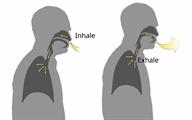EsteéoconteúdodoPacientEngagement
O que acontece quando o paciente vai para casa?
Saiba mais sobre nossos produtos de Patient Engagement agora! Transforme seus pacientes em participantes ativos em seus cuidados de saúde, dando a eles acesso fácil às mesmas informações baseadas em evidências em que você confia - mas fornecidas em um formato fácil de entender.
Pulmonary rehabilitation, also called pulmonary rehab, is a program that helps people manage their breathing problems. The main goals are to increase endurance, reduce breathlessness, and improve quality of life. Pulmonary rehab can last 4–12 weeks or more, depending on your condition.
You may need pulmonary rehab if:Benefits of pulmonary rehab
Pulmonary rehab may help you:Exercise training
Exercise training involves doing physical activity, such as:Exercise training will vary based on how much activity you can handle, and it will slowly become harder or more intense as you build up your endurance. In most cases, you will have exercise training 3 days a week.
After you finish pulmonary rehab, your health care provider will create an exercise program to help you maintain your progress.
Education
Your rehab team will teach you about your disease and ways you can manage symptoms. You may have one-on-one sessions or group meetings. You may learn:Nutrition support
Being overweight or underweight can affect your breathing. You may meet with nutritionists to come up with the right diet for you. This may include:Breathing training
 Breathing exercises can help you better control your breathing by taking deeper breaths, less often. Breathing exercises may include:
Breathing exercises can help you better control your breathing by taking deeper breaths, less often. Breathing exercises may include:Energy conservation training
Your rehab team will show you how to complete everyday tasks without getting out of breath. This may include techniques for avoiding bending, lifting, or reaching.
Counseling
You may receive individual or group counseling during pulmonary rehab. These meetings can help with any anxiety, depression, or frustrations you may be feeling. Counseling may include:Your family members and caregivers may also participate in counseling.
This information is not intended to replace advice given to you by your health care provider. Make sure you discuss any questions you have with your health care provider.
Cookies são usados neste site. Para recusar ou saber mais, visite nosso conheça nosso aviso de cookies.
Copyright © 2025 Elsevier, its licensors, and contributors. All rights are reserved, including those for text and data mining, AI training, and similar technologies.